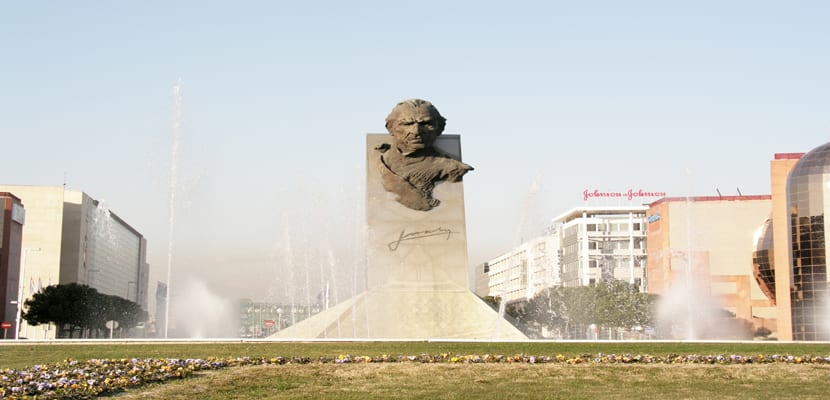
Last May, the Juan Carlos I Park celebrated its 25th anniversary as the great lung of modern Madrid. It was in 1992 when the then kings of Spain, Don Juan Carlos I and Doña Sofía, inaugurated the park in the company of Mayor Álvarez del Manzano with Madrid as the epicenter of the European Capital of Culture.
Many years have passed since that day and over time it has become one of Madrid's favorite green spaces for its unique mix of culture, sport and nature. On the occasion of its 25th anniversary, we took a tour to learn a little more about this beautiful park in the north of Madrid.
Origin of the park
Located northwest of Madrid, in the Barajas district, Juan Carlos I Park is the second largest in the capital after Casa de Campo with an area of approximately 160 hectares.
It was born because of the European Capital of Culture of Madrid in 1992 and with its creation a highly degraded area was recovered. Of the original land, only a centenary olive grove is preserved, known in times as the Olivar de la Hinojosa and later as Olivar de la Reina, in honor of Doña Sofía.
The Juan Carlos I park was the work of the architects Emilio Esteras and José Luis Esteban Panelas. It belongs to the Campo de las Naciones complex, where the facilities of the Palacio de Congresos, the Feria de Madrid and several hotels and offices are located.
Characteristics of the park
At the entrance of the Juan Carlos I park in Madrid you can still read the intentions of its ideologues: recover an old degraded environment and be the north door of welcome to the city.
As we have indicated previously, we are facing a park of enormous dimensions that has a lake of 30.000 square meters, an estuary of 1.900 meters in length, 13.000 meters of walks, 19 outdoor sculptures, 21 hectares of olive groves, an auditorium, a stove cold and the garden of the three cultures.
What to do in Juan Carlos I Park
Sport activities
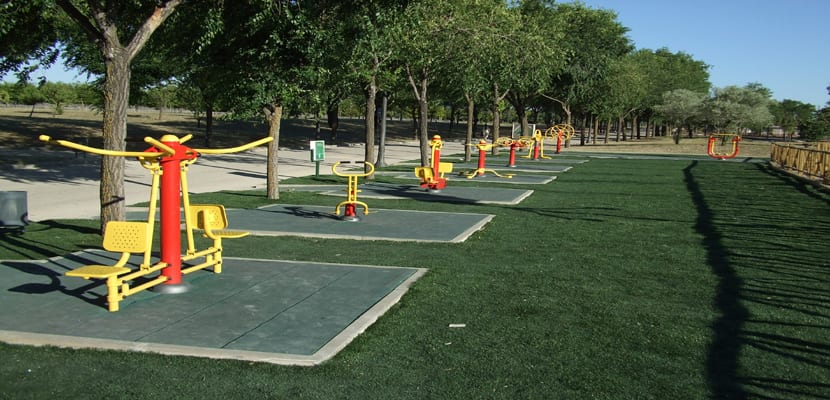
All kinds of sports activities: from running and cycling to exercising in an area with machines. In fact, one of the best ways to get to know Parque Juan Carlos I is by using the free bicycle loan service. To be able to use them, it is only necessary to give the ID number. With this information, the workers in charge of the service issue a free annual electronic personal card.
Leisure and culture
The wealth of the Juan Carlos I Park is not only botanical but also architectural and sculptural. Below we discover some of the corners of special interest within the park that we can visit by taking a long walk.
Cold Stove

Image | Minube by Carlos Olmo
It is a botanical garden that is practically unknown to most people in Madrid. It was created in 1996 as one of the most sustainable natural spaces in Madrid because with its semi-closed structure it achieves a natural air conditioning due to its orientation, the use of glass panels and a certain underground. In this way, it does not need energy consumption to maintain itself.
The Cold Stove has a rectangular shape and houses a botanical collection of exotic plants in its 4.000 square meters divided by zones: citrus fruits, ferns, bamboos, succulents, palm trees, acidophilic plants, riverside forest and native plants, among others.
The silence that reigns in this beautiful place is only interrupted by the fall of the water from the waterfall into the pond where the aquatic plants are found. The opening hours of the Cold Stove are from 10 a.m. to 22 p.m. from June to September and from 10 a.m. to 20 p.m. from October to May.
The Garden of the 3 cultures
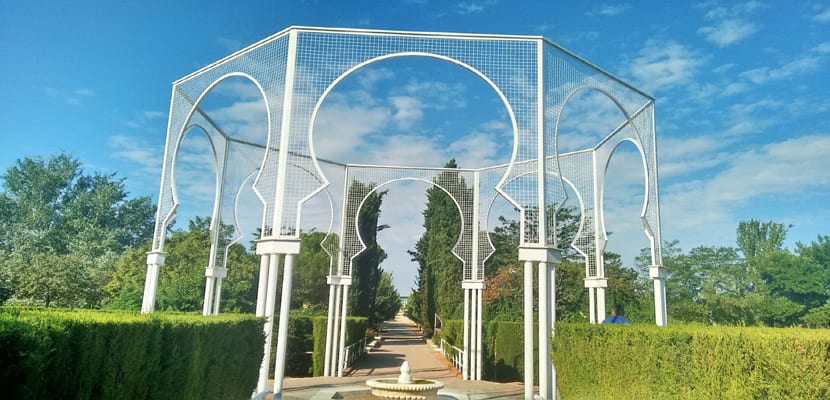
Image | Madrid and its things
Designed by Myriam Silber Bodsky is a set of three gardens dedicated to the most important monotheistic religions (Christianity, Judaism and Islam) and their coexistence in medieval times in our country.
The objective of this garden is to revalue and recover the cultural contribution of the 3 religions in Spain and transmit the values of tolerance and coexistence.
Mexico space
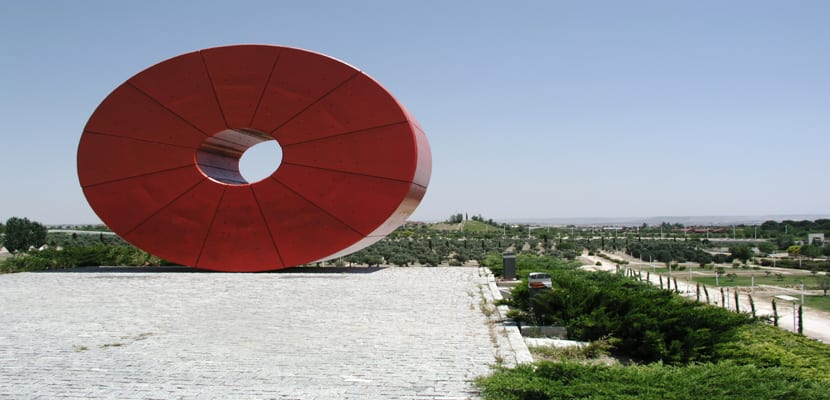
This impressive 17-meter tall reddish donut-shaped sculpture was a donation from Mexico City to Madrid. Created by Margarita García Cornejo and Andrés Casillas, "Espacio México" is a symbol of Mexican traditions: it alludes to the sun, the ball game of the Mayan cities, the Aztec calendar and the stone of sacrifices, both for its color and for its way.
Physicromy

This 40-meter-long sculpture was created by Venezuelan artist Carlos Cruz Díez in 1991 on two concrete pillars. It is an undulating metallic structure that changes color depending on the light and the viewer's movement.
Fingers
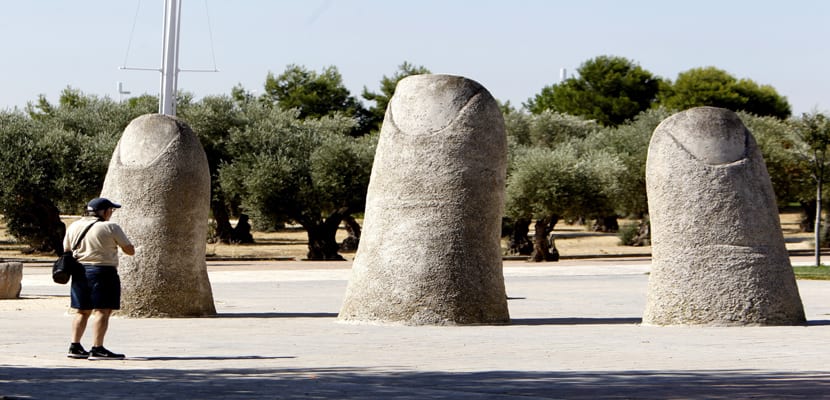
Image | EFE / Javier López
On the central promenade of the Juan Carlos I park we find this striking figure called "Fingers", a work by Chilean artist Mario Irarrázabal in 1994. This sculpture represents the fingers of a large hand that sprout from the ground.
my sky hole
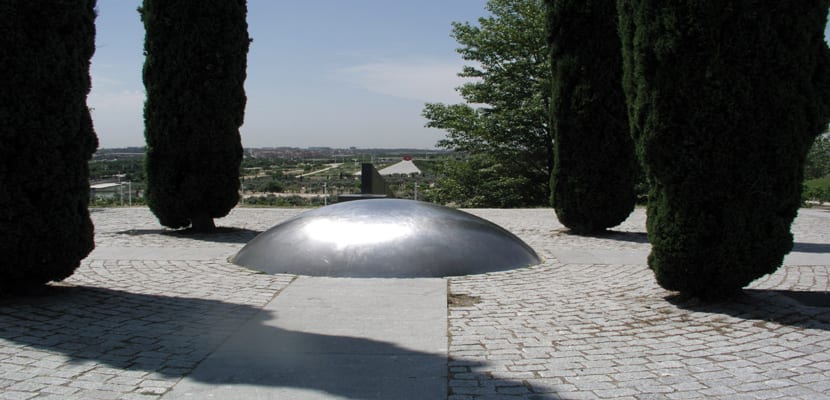
Located at the top of the highest mound in the park we find a huge stainless steel sphere that emerges from the center of the cobblestone pavement. It is called "My sky hole" and is the work of Japanese artist Bukichi Inoue, who has made similar ones in various parts of the world.
Four beautiful cypress trees surround the complex, which symbolizes the union of heaven and earth, the human and the divine. It is a place for meditation and rest and from its top you have spectacular views of the park.
Blue Passage

Image | Flickr
This undulating construction that emerges gently over the plain and blends in with the surroundings is a sculpture by Romanian sculptor Alexandru Calinescu Arghira from 1991.
It is divided into three longitudinal streets and a transversal one (the blue passage), which creates tension in the whole. It is also characterized by its brick sides and its blue interior walls.
Other sculptures
Other sculptures that can be seen in the Juan Carlos I park are: "Cantos de la Encrucijada", "Eolos", "Walk between two trees", "Tribute to Galileo Galilei", "Manola Opus 397", "Encounters" or "Journey Inside".
Hall
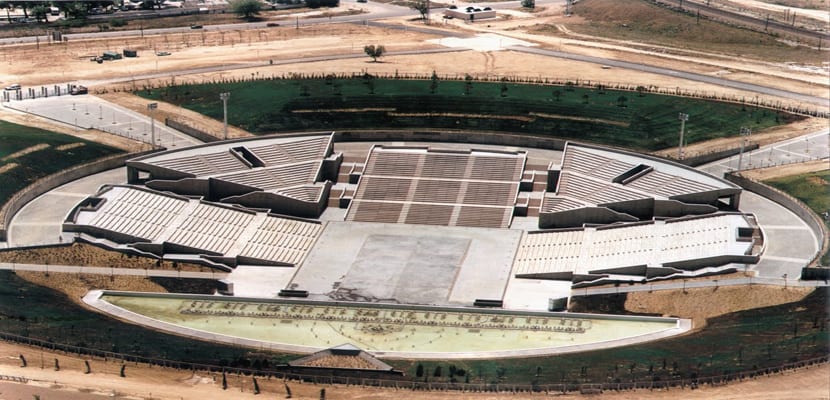
Image | Panoramio
Another very interesting space to get to know in the Juan Carlos I Park is its auditorium. A space that stands out for its impressive sound, light and water shows from the fountains of small ponds.
At present it is not used although on several occasions it has been proposed to reopen it for large concerts or various performances. Its central court is 1.700 m2.
Park train
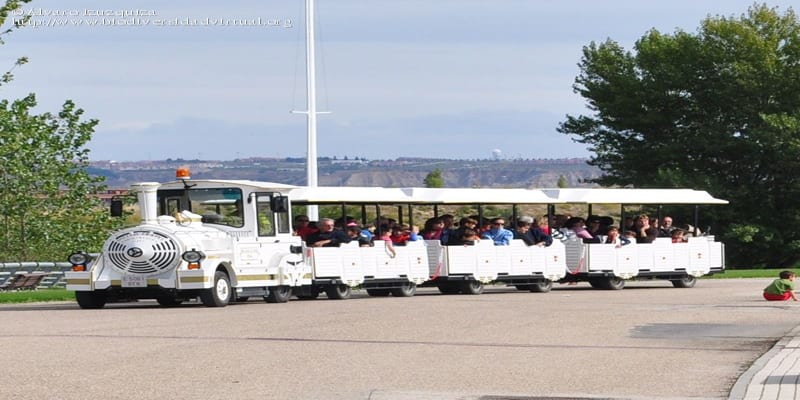
Image | Virtual Biodiversity
A very touristy and fun option to visit the Juan Carlos I park, especially with children, is to do it riding a white train that goes around the entire ring of the park.
Address
- Metro: Line 8. Feria de Madrid
- Bus: Lines 104, 112, 122